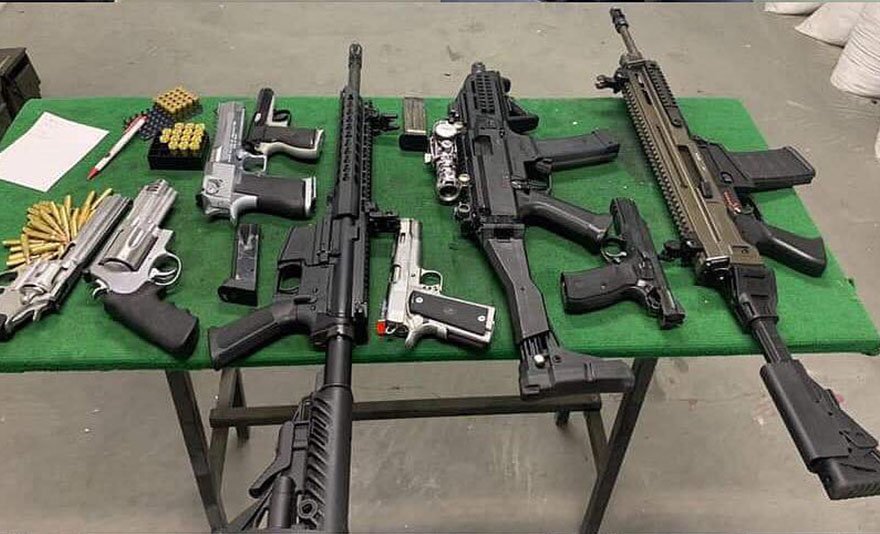Churchill wrote the definitive book on instinctive wingshooting for game birds and sporting clays. His friend and collaborator Macdonald Hastings, himself a renowned shooting coach, twice revised and updated this edition.
The Churchill method focuses on economy of movement and elegant, efficient gun mounting. Its premise is that the shooter should point the gun naturally and simply.
Swing-through method
While many shooters seek the latest technique for achieving a consistent lead on a target, it is important to remember that there are some timeless truths. These include sharp visual focus, subconscious application of lead and a synchronized gun mount. In addition, it is necessary to be able to read the line of a moving target and understand how the barrels achieve lead at different speeds.
One of the most popular methods for leading targets is called the swing-through method. This technique involves pointing at a target, moving through it and then pulling the trigger when the space in front of the target is clear. While this method is easy for beginners to learn, it requires a lot of practice to master it.
Another popular method is the sustained lead, which involves maintaining a gap ahead of the target during the entire gun mount and shot. This method is popular among skeet shooters, who have to deal with predictable flight paths and fixed distances and angles.
This method works best on high driven birds, but it can also be used on smaller pheasants and partridges. It is also an excellent choice for quail, but you should keep in mind that it requires more lateral movement than the swing-through method. To get started, you should first position your feet perpendicular to the target and place a bit of pressure on your lead foot during the weight transference.
Instinctive lead
Having the correct lead for different targets and distances is vital for any shotgun shooter. This can be determined by patterning for fit or through the instinctive lead method favored by Churchill shooters. The instinctive lead method is a great system for both wing shooters and clayshooters. It is especially effective for skeet shooters dealing with a predictable flight path and set distances but can also work in the field for wing shooters when faced with small windows of opportunity. This style of shooting requires a high level of focus, efficient movement of the gun and an unwavering faith to instinctively execute the shot.
In this method, the barrels start off a measured distance in front of the target and remain there maintaining that gap ahead throughout the mount and final shot. This technique is a favorite of Skeet Shooters and can be applied to other bird hunting situations such as Woodland Drives and Valleys.
Churchill is a man of great self-belief, but Reid suggests that he was impassioned with the wrong cause. The British army, he argues, was about “protecting this sprawling empire across the globe,” and from today’s perspective it is hard to see that as a noble endeavor. Nevertheless, Churchill was a man of tremendous resolve who would not hide from his enemies. He fought to the end and was, ultimately, victorious.
Economy of movement
Leaving behind the old guard of naval officers, Churchill created his own staff and put young, dynamic men in key positions. One of his most significant initiatives was to establish a naval war office, which would be divided into three divisions—operations, intelligence, and mobilization—to prepare and co-ordinate naval strategy. Churchill also reformed the way war meetings were conducted. He ascended the naval rank of captain to become vice admiral in charge of operations, and he replaced the first sea lord, Sir Arthur Wilson, with a newcomer, the dashing Admiral David Beatty.
The South African War left a profound mark on Churchill, who returned to Sandhurst in high spirits and a new purpose. He was interested in military topics again and excelled at horsemanship. He also took up oil painting, learning to daub the canvas with bold strokes. His tutor was the wife of John Lavery, and Churchill became a devotee of his paintings.
In domestic politics he began to focus on the thorny field of social reform. He favored a greater role for the state in the economy and endorsed a national minimum standard to mitigate poverty. Churchill also took a tough line on industrial unrest, sending troops to Tonypandy and condoning brutality on the part of the police during the riots in 1910. It was later alleged that he had ordered troops to shoot down striking miners.
No conscious lead
Churchill shooting is a simple technique that relies on hard focus and faith in your eyes and hands to move the gun where it needs to go. The method uses a short, fast gun mount and swing, and maintains lead by keeping the barrels ahead of the target. This way, you don’t have to think about the shot as much as if you were using a more traditional style.
Churchill was a man of many virtues and vices, but his dedication to the cause of democracy and freedom was undying. He was unfailingly courageous in the face of great adversity, and his leadership during World War II made him one of history’s most decisive leaders. His ability to speak with a deep and passionate conviction inspired people around the world.
Churchill was a brilliant orator, but he was also a superb writer and an acclaimed painter. He was the author of many books and essays, and he drew on his personal experience as well as historical events to shape his speeches. Although he never attended college, Churchill was a lifelong learner. He read Macaulay, Adam Smith, Darwin, Plato, and Edward Gibbon’s The Decline and Fall of the Roman Empire. He embraced his own warrior instincts and was not afraid to challenge conventional wisdom. He was often dismissed by his peers, but he always came back into the public sphere with new ideas.

